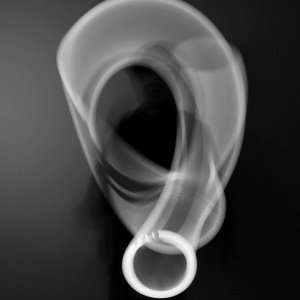Oriental Winds (2017)
Approx. Length - 11'00
For Symphony Orchestra and Solo Bansuri, Suling and Xiao
-----
"Plenty of beautiful sounds to savour...magical"
"Concertgoers were all getting to enjoy themselves oohing and aahing to Lok's score...this has the makings of an effective concert work"
- The Straits Times, reviewed by Dr Marc Rochester, published 2018 February 13
"Loved it very much...a tremendous dynamic development, making it a thrill to listen to"
- Lianhe Zaobao, reviewed by Quek Yong Siu (originally in Chinese), published 2018 February 24
-----
Oriental Winds is an evocative and cathartic work for symphony orchestra and 3 solo ethnic flutes - the Indian bansuri, Malay suling, and Chinese xiao.
The various motifs in this piece were inspired by the ethnic groups, while the frequent use of quintal harmonies were intended to portray tranquility and being free from attachment (one can say, to functional harmony), free like the wind. Impressionist concepts and orchestration techniques also influenced the creation of the piece.
Opening: A pale shimmer among mist and clouds. An oboe is the first to call out into the vast, formless world, receiving only distant echoes from clarinets and flute. A trombone follows, receiving even shorter echoes. Muted string trills then blow over and carry the orchestra into a mystical scene, set by the harp and vibraphone moving freely. The congregation is invoked to create the soundscape, as various instruments utter and foreshadow the first main motif at different moments. Different winds start to creep in, each starting as a mere zephyr, growing in intensity, weaving in and out, before fading into empty air.
The world begins to take form: the oboe, once again, along with violins, sing the main theme. Here, divided into 4 sections, the violins start to drop out from each phrase section by section, each clinging onto their last note, like a lingering breeze. The humble theme then passes to the clarinet family, bassoon, horns and celli, singing in unison in rich, intense registers. Rumbles from the percussion instruments seem to build up, before the texture dissolves once again. The second main motif is quoted twice, heralding the arrival of the soloists. Each ethnic flute recalls the motifs, adopting them with different cultural nuances, telling tales as they know them. The orchestra woodwinds return shortly after the various tales, each instrument reminiscing, contributing a part of the melody, before the orchestra sweeps into an evocative and passionate moment with the main theme finally reprised in full again, led by a tutti string section. The horns counter with a melody based on the second main motif, while the high woodwinds present relentless gusts of wind with their ostinato - the whole orchestra and soloists are united.
However, this moment is short-lived - the strings suddenly descend with a great chromatic scale into a frenzy. The percussion section brings forth a windstorm, where pairs of Chinese cymbals, big and small, are rubbed against each other, conjuring roaring gales. Adding to them, a Chinese cymbal, placed reversed on the lowest timpano, is rolled upon and pedalled, creating howling sounds.
As the congregation is invoked again for this soundscape, the orchestra emerges with a fast tempo in an odd 11/8 meter, the magnificent winds of change sweeping across the surface of the Earth against all odds towards the future. After a few solos, the pulsing rhythm abruptly reaches a standstill, upon which the 3 soloists trade dances with the bass clarinet, bassoon and trumpet. The accompanying orchestra winds are tranquil and reflective, with instruments contributing to the texture one by one like rays of light. The violins and violas soon join in the flurry of the soloists, moving across their registers, eventually building to a sudden breakout. The 3 solo flutes, edged on by the hi-hat, glide rapidly, picking up from one another, finally moving together and merging into one. The orchestra launches into the concluding passage, even faster than before, eventually losing a beat every successive bar and getting more and more tense, a cathartic rush before a final gust closes the scene.
Commissioned by the Asian Cultural Symphony Orchestra. Premiered at their concert, "Oriental Winds", on 2018 February 10 under conductor Adrian Chiang.
Full Instrumentation:
2 Flutes
2 Oboes
2 Clarinets in Bb
1 Bass Clarinet in Bb
2 Bassoons
4 Horns in F
2 Trumpets in C
2 Trombones
1 Bass Trombone
1 Tuba
Timpani
Triangle, Xiaocha (small Chinese cymbals), Taiko Drum (or Dagu)
Suspended Cymbal, Dacha (large Chinese cymbals), Hi-hat
Bass Drum
Tam-tam, Vibraslap
Wind Chimes, Temple Blocks, optional Wind Machine
Vibraphone, Tom-toms
Harp
Audience (soundscape)
Solo Bansuri
Solo Suling
Solo Xiao
Strings
Difficulty Levels:
Strings: ●●●●○
Woodwind: ●●●●○
Brass: ●●●○○
Percussion: ●●●○○
Overall: ●●●●○
